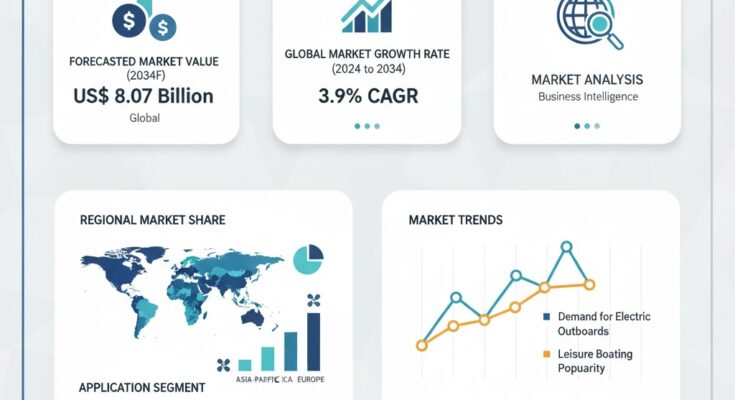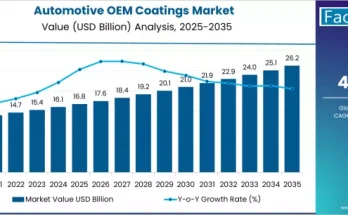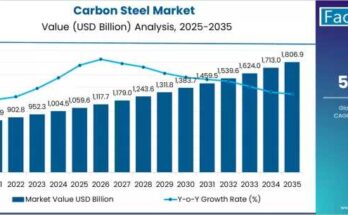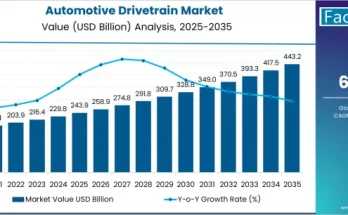The global marine outboard engine market is charting a course for steady growth, driven by rising demand for recreational boating, fishing activities, and commercial maritime operations. According to a recent report by Fact.MR, the global marine outboard engine market size is set to reach US$ 5.52 billion in 2024, and is projected to expand at a CAGR of 3.9% to reach US$ 8.07 billion by 2034.
As coastal tourism, leisure boating, and small-scale maritime trade expand globally, the market is witnessing strong demand for efficient, lightweight, and eco-friendly outboard propulsion systems.
Strategic Market Drivers
- Growing Recreational Boating and Fishing Activities
The surge in water-based leisure activities such as fishing, yachting, and marine tourism is fueling outboard engine demand. The increasing popularity of small and mid-sized boats in North America, Europe, and Asia-Pacific, combined with a growing preference for easy-to-maintain propulsion systems, is strengthening market prospects.
Outboard engines are gaining traction for their portability, compactness, and superior maneuverability compared to inboard alternatives, making them ideal for both recreational and commercial vessels.
- Technological Advancements and Electrification
Continuous innovation in engine design and materials has led to the development of next-generation outboard engines that deliver enhanced performance with reduced noise and emissions.
The marine industry’s transition toward electric and hybrid outboard engines is a key growth catalyst, driven by stricter environmental regulations and consumer demand for cleaner propulsion technologies.
- Expanding Coastal and Inland Waterway Trade
Growing economic activity in coastal and inland waterways, particularly in Asia-Pacific and Latin America, is driving commercial adoption of marine outboard engines. These engines are widely used in fishing boats, patrol vessels, and transport crafts, offering reliability and fuel efficiency for continuous operations.
Regional Growth Highlights:
North America: Recreational Powerhouse
North America dominates global marine outboard engine sales, led by the United States, which boasts a thriving boating culture and a robust marine tourism industry. Government support for marine infrastructure development and a strong aftermarket service network are propelling regional growth.
Europe: Focus on Sustainability and Electrification
Europe’s marine industry is witnessing a shift toward electric and hybrid propulsion systems. The region’s stringent emission standards and initiatives promoting sustainable marine mobility are driving innovation in outboard engine technologies, particularly in countries like the U.K., Germany, and France.
East Asia: Emerging Manufacturing and Export Hub
East Asia, led by Japan, China, and South Korea, is becoming a vital hub for marine engine manufacturing and export. Rising demand for affordable and energy-efficient outboard engines, coupled with government-backed maritime development programs, is supporting market expansion.
Emerging Markets: Expanding Marine Fleet and Infrastructure
Countries in Southeast Asia, the Middle East, and Africa are investing heavily in coastal infrastructure, small vessel fleets, and fishing modernization programs—creating significant growth opportunities for global and regional manufacturers.
Market Segmentation Insights
By Engine Type
- Two-Stroke Engines: Lightweight and cost-effective, ideal for smaller vessels and high-speed operations.
- Four-Stroke Engines: Increasingly preferred for their fuel efficiency, durability, and compliance with emission norms.
- Electric Outboard Engines: Gaining momentum due to sustainability initiatives and technological advancements.
By Application
- Recreational Boats – Dominant segment, supported by leisure and tourism demand.
- Commercial Boats – Growing usage in fishing, transportation, and offshore services.
- Government & Rescue Operations – Adoption in patrol and emergency response crafts.
Challenges and Market Considerations
Despite promising prospects, the marine outboard engine market faces challenges such as:
- High Initial Costs: Advanced four-stroke and electric outboard engines entail higher upfront investments.
- Emission Compliance: Regulatory frameworks are pressuring manufacturers to develop greener, low-emission propulsion systems.
- Fuel Efficiency Concerns: Fluctuating fuel prices and operational costs influence purchasing decisions.
- Supply Chain Constraints: Delays in raw materials and electronic components can hinder production timelines.
Competitive Landscape
Some of the prominent players in the marine outboard engine market include:
DEUTZ AG, Honda Motor Co., Ltd., Brunswick Corporation, Suzuki Motor Corporation, BRP Inc., Johnson Outdoors, Inc., and Volvo Penta.
Leading companies are focused on expanding their global footprint by establishing additional sales offices and distribution centers. Manufacturers are investing in material optimization, digital monitoring systems, and production scalability to meet growing global demand.
Recent Development:
- In 2022, Mercury Marine, a division of Brunswick Corporation, unveiled its latest 25HP and 30HP four-stroke outboard engines, engineered for reduced weight, enhanced speed, and simplified maintenance—marking a significant step toward performance efficiency and user convenience.
Future Outlook: Navigating Toward Sustainable Marine Mobility
The next decade will redefine marine propulsion with greater emphasis on electrification, digital integration, and eco-efficiency. Manufacturers are increasingly developing low-emission and connected outboard engines to align with global sustainability goals.
With continued investments in marine tourism, coastal development, and green technology, the marine outboard engine market is set to achieve steady and resilient growth through 2034.
Companies that champion innovation, sustainability, and global collaboration will lead the industry powering a cleaner, smarter, and more efficient era of marine mobility.



